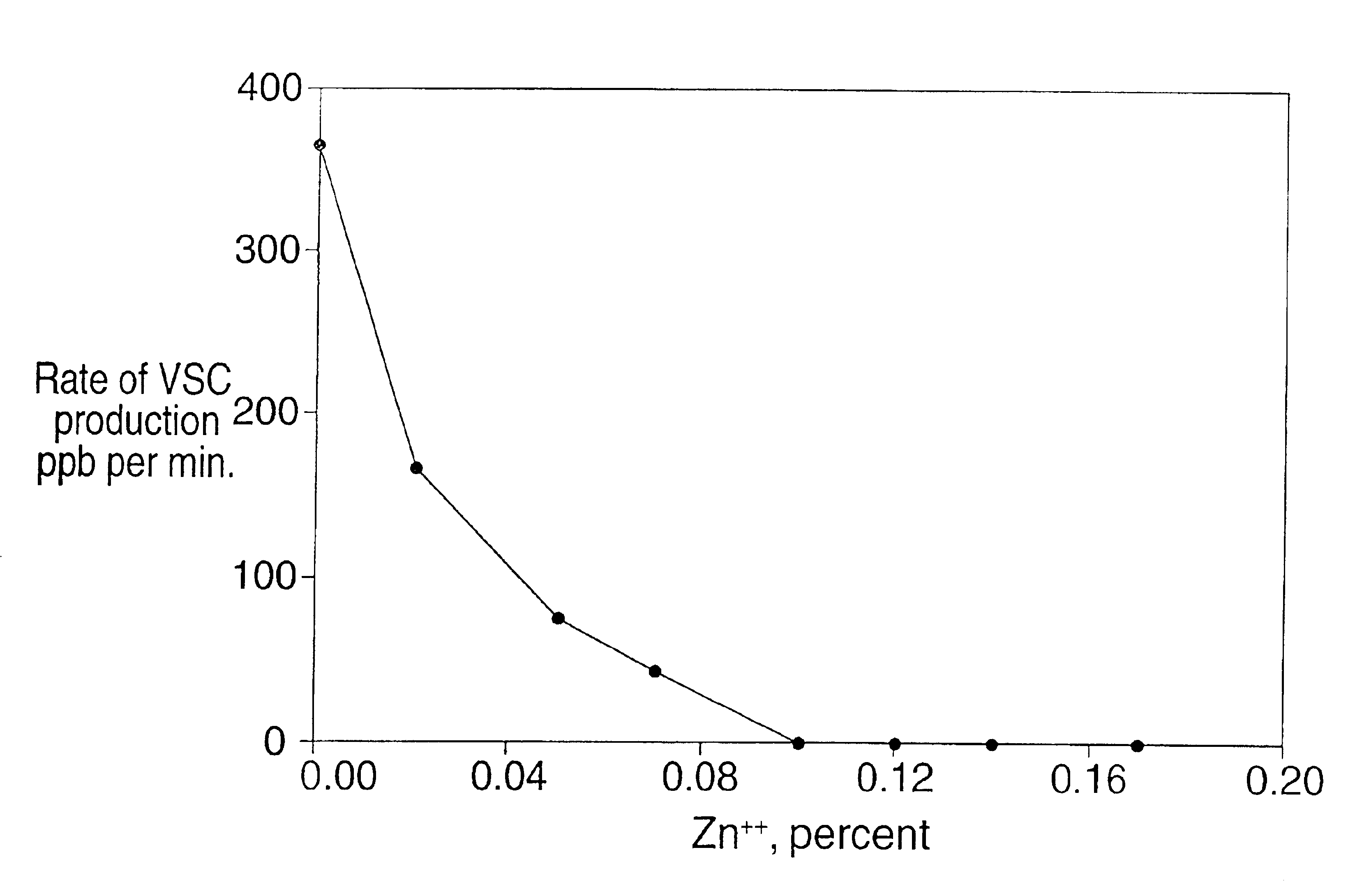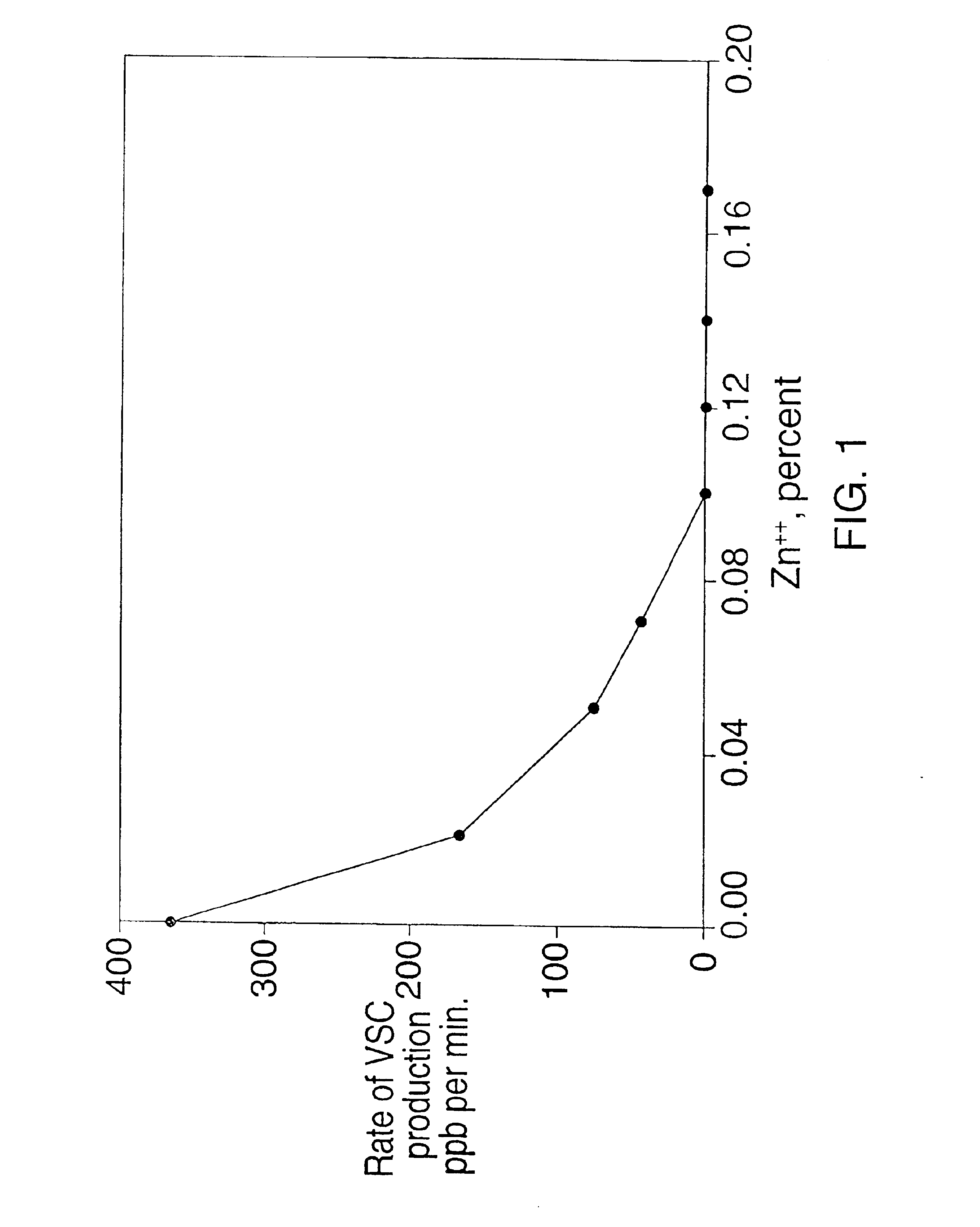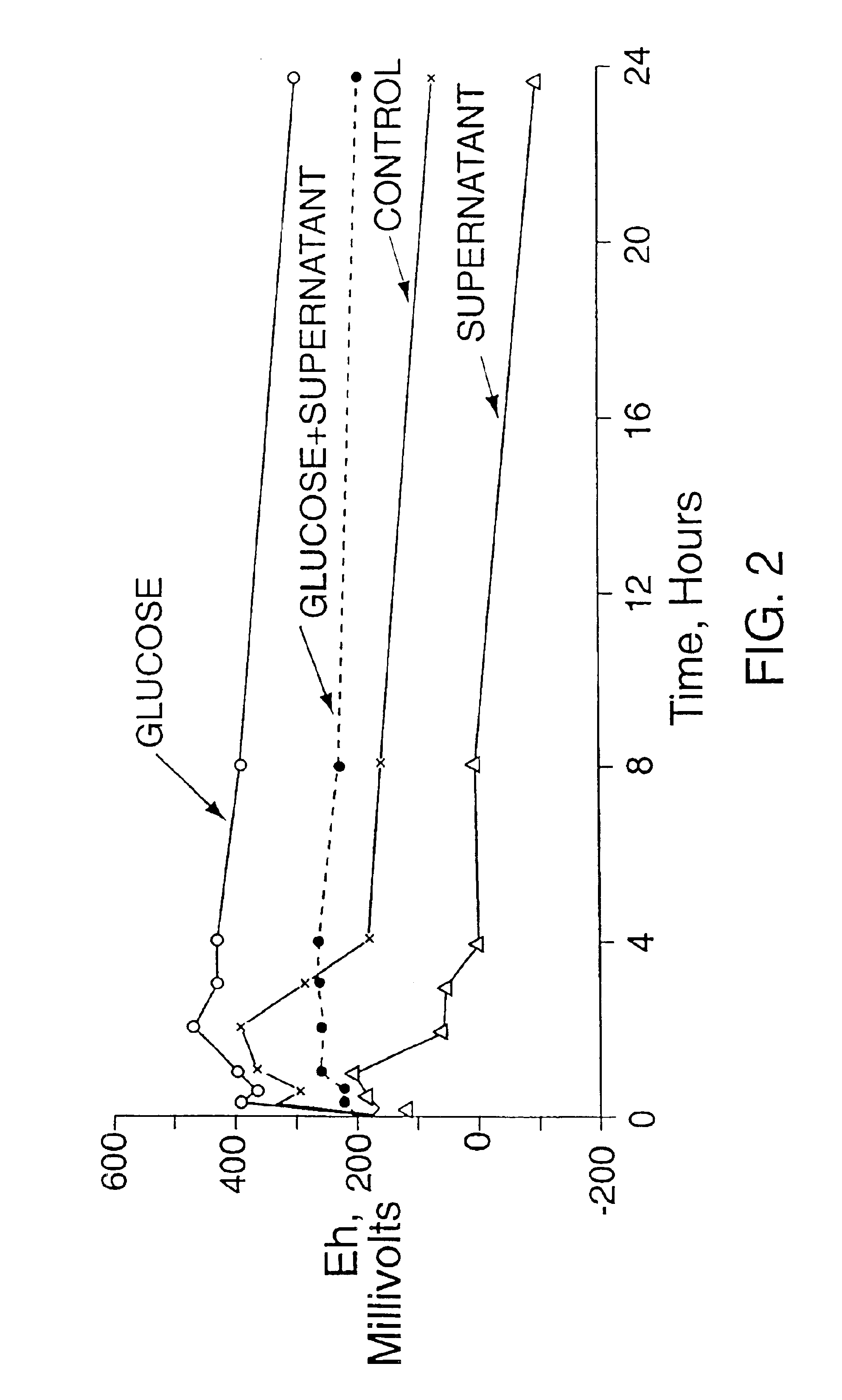Compositions to control oral microbial oxidation-reduction (Eh) levels
a technology of compositions and oxidation reduction, applied in the field of oral compositions, can solve the problems of tooth loss, dental caries lesions (cavities), and relatively slow formation of chlorine dioxide from chlorite ions, so as to prevent a lowering of the eh of the oral cavity and reduce the eh of gingivitis-periodontitis. , the effect of reducing oral malodor
- Summary
- Abstract
- Description
- Claims
- Application Information
AI Technical Summary
Benefits of technology
Problems solved by technology
Method used
Image
Examples
example i
[0052]This Example demonstrates the ability of salivary supernatant to lower the Eh and the ability of glucose to act as an Eh raising compound to raise the Eh in the salivary sediment system model developed by Kleinberg (1967 and 1970) Archs. oral Biol., 12:1457-1473; Advances oral Biol. (Volume 4) New York, N.Y. Academic Press pp. 49-50 (see FIG. 2). This model utilizes the mixed oral bacteria collected in the salivary sediment obtained from whole saliva by centrifugation. Extensive studies have shown that this system behaves metabolically like dental plaque (Singer et al. (1983) Archs. oral Biol. 28:29-35; Wijeyeweera and Kleinberg (1989 a and b) Archs. oral Biol. 34:43-64; Salako and Kleinberg (1992) Archs. oral Biol. 37:821-829; Ryan and Kleinberg (1995) Archs. oral Biol. 40:743-752). This model is recognized in the art as an effective proxy to study the microbial metabolic and related biochemical processes of the oral cavity. The ability of the different amino acids available ...
example ii
[0056]A similar type of in vitro experiment as in Example I was carried out to assay the ability of (i) zinc chloride, (ii) hydrogen peroxide, and (iii) zinc chloride and hydrogen peroxide, to prevent a fall in the Eh of the oral cavity. Incubation tubes were prepared containing 16.7% sediment, 60 mM phosphate buffer, and (i) zinc chloride at a concentration of 6.0 mM (0.08%), (ii) hydrogen peroxide at a concentration of 0.5%, or (iii) zinc chloride at a concentration of 6.0 mM and hydrogen peroxide at a concentration of 0.5%. A tube was prepared containing salivary sediment and salivary supernatant only (water control). FIG. 2 shows the Eh of the mixtures during incubation at 37° C. over a 24-hour time period.
[0057]As shown in FIG. 3, zinc chloride and hydrogen peroxide alone, or in combination, significantly raised the Eh of the incubation mixture compared to the salivary supernatant plus salivary sediment control. The control incubation mixture containing only sediment and supern...
example iii
[0058]This example shows the ability of the zinc ion-peroxide-chloride ion compositions of the present invention to retard or reduce the Eh lowering ability of the oral bacteria and their ability to produce malodor. As shown in Example II, hydrogen peroxide can have an inhibitory effect on odor production by the mixed bacteria that comprise the microflora of the salivary sediment system. However, it will be difficult for peroxide to persist in this system or in dento-gingival or tongue plaque in situ because their microfloras contain bacteria that have exceptionally high catalase and peroxidase activities. (Ryan and Kleinberg (1995) Archs. oral Biol. 40:743-752). Consequently, for peroxide to be effective in the mouth, it is necessary to inhibit this catalase activity. Otherwise, peroxide levels well over 1% would be necessary to reduce the oral malodor and this concentration can be harmful to the oral soft tissues. An agent presently documented to be inhibitory of catalase activity...
PUM
| Property | Measurement | Unit |
|---|---|---|
| boiling point | aaaaa | aaaaa |
| pH | aaaaa | aaaaa |
| time | aaaaa | aaaaa |
Abstract
Description
Claims
Application Information
 Login to View More
Login to View More - R&D
- Intellectual Property
- Life Sciences
- Materials
- Tech Scout
- Unparalleled Data Quality
- Higher Quality Content
- 60% Fewer Hallucinations
Browse by: Latest US Patents, China's latest patents, Technical Efficacy Thesaurus, Application Domain, Technology Topic, Popular Technical Reports.
© 2025 PatSnap. All rights reserved.Legal|Privacy policy|Modern Slavery Act Transparency Statement|Sitemap|About US| Contact US: help@patsnap.com



